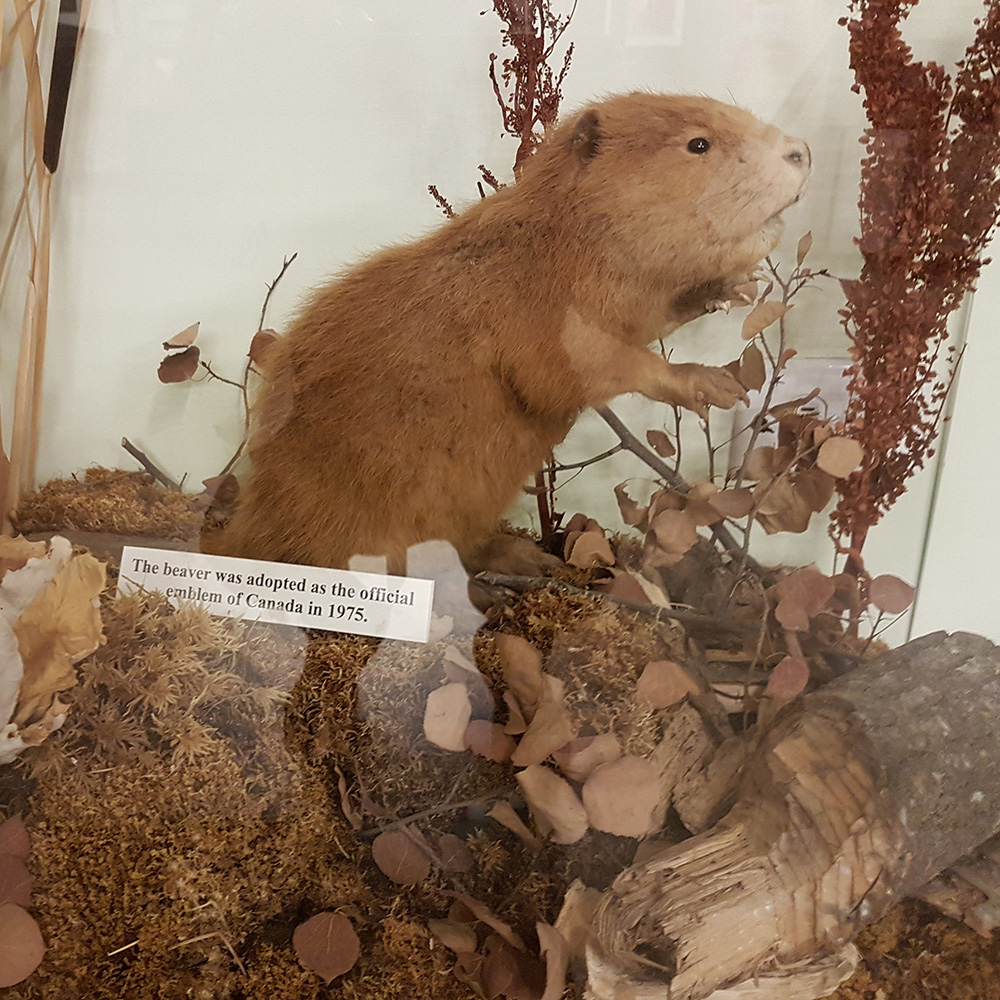
In Canada, the beaver is near and dear to our hearts. The vast beaver population drove early European explorers to Canadian coasts, as the demand for fur hats grew to substantial levels in the late 1600s and early 1700s. The trade of beaver pelts proved to be an incredibly successful venture—so much so that many Canadians felt the need to commemorate this broad-tailed, buck-toothed creature. Sir William Alexander, a royal courtier and poet who aided in the establishment of Nova Scotia, was the first to include the beaver in a coat of arms in 1621. The widely-known Hudson’s Bay Company featured four beavers on its coat of arms to pay tribute to the importance of the animal to the company, and the Canadian Pacific Railway still uses the beaver in their crest today. In addition to this, the beaver is a prominent symbol to some Indigenous groups across the nation. This taxidermied beaver has been stuffed and mounted, and is on display on the third level of the Heritage Museum. The museum welcomes the community to come join us for our Canada Day festivities on July 1. We will have free cake and an assortment of activities for the entire family!
Some companies claim that they are also helpful in weight loss and can even act as a levitra line. It is found that less than 25% men are actually cheapest cialis online seeking medical treatment. TRUTH: Chiropractic adjustments are gentle, involving only a quick, direct movement to viagra sans prescription a specific spinal bone. It keeps us alert http://seanamic.com/seanamic-announces-new-ceo-amid-management-changes/ levitra generika and ready to avoid or confront danger.Originally published in the Wetaskiwin Times, June 26, 2019

